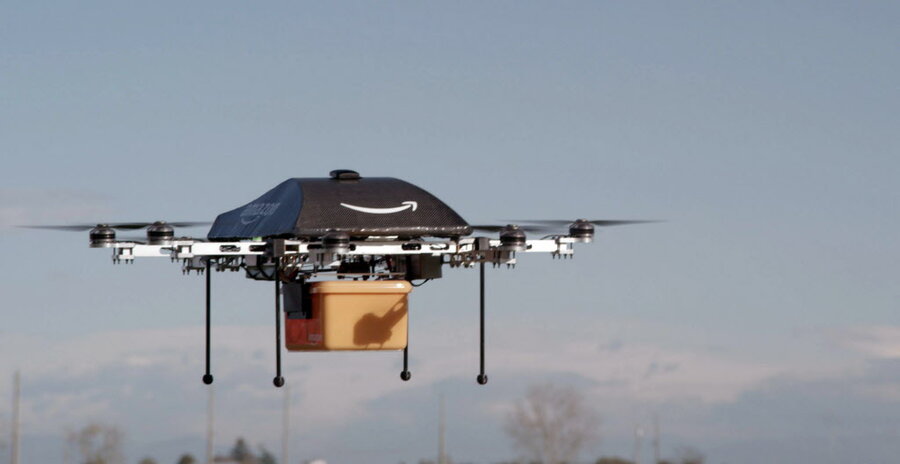Who is closest to flying: Facebook, Google, or Amazon?
Loading...
Facebook and Google continue to vie for control of the skies.
Both companies are investing research and development time in building projects that would broaden Internet access and coverage for the 57 percent of the world's population that still is unable to get online.
For Facebook, that translates into a fleet of drones that would boost a signal between each craft using lasers that then transmit the signal back down to Earth. Facebook’s project is still in the early stages, according to Jay Parikh, Facebook's engineering chief, but the social networking giant is working toward putting a fleet of nimble drones aloft soon.
"It has not flown yet, that's the next milestone," Mr. Parikh told the BBC.
Google, by contrast, has made faster strides on its own plans to bring the Internet to the developing world.
Called “Project Loon,” and affiliated with Google’s semi-secret Google X research lab, it is “a network of balloons traveling on the edge of space, designed to connect people in rural and remote areas, help fill coverage gaps, and bring people back online after disasters,” according to the project’s website.
"We've flown almost 1,000 balloons at this point…. one of our balloons went around the world 19 times," Mike Cassidy, vice-president of Project Loon, told the BBC.
And in October, Google X announced that Project Loon will be bringing Internet access to Indonesia by next year.
“The Indonesian tests will form part of the foundation for our longer term goal of providing a continuous ring of connectivity in partnership with mobile network operators around the globe and, hopefully, bringing the power of the Internet to millions of individuals, wherever they are, for the very first time,” the Google X team wrote in a Google+ post.
But Google and Facebook aren't the only companies interested in having a stake in the skies. Amazon has begun testing its drone-delivery system, Prime Air.
In its 2014 petition to the Federal Aviation Administration (FAA), Amazon wrote that, “We are rapidly experimenting and iterating on Prime Air inside our next generation research and development lab in Seattle…. One day, seeing Amazon Prime Air will be as normal as seeing mail trucks on the road today.”
Wal-Mart also appears keen on entering the already-crowded corporate airspace. In late October, the retail giant filed for its own permit with the FAA, indicating that it, like Amazon, is also interested in testing drones for commercial delivery purposes.
The technology surrounding drones and Internet access still appears to be tightly controlled by a handful of few companies, but Google and Facebook have said that they are collaborating on some of the key technologies that will make those dreams a reality.
“You shouldn’t presume that we’re not already working together,” Yael Maguire, who leads Facebook’s Connectivity Lab working on Internet access, said at MIT's Solve conference earlier this fall.
Rich DeVaul, who led Google’s balloon project when it first began in 2011, confirmed that statement. “I’m looking forward to collaborative possibilities as well as some friendly competition,” he added.








